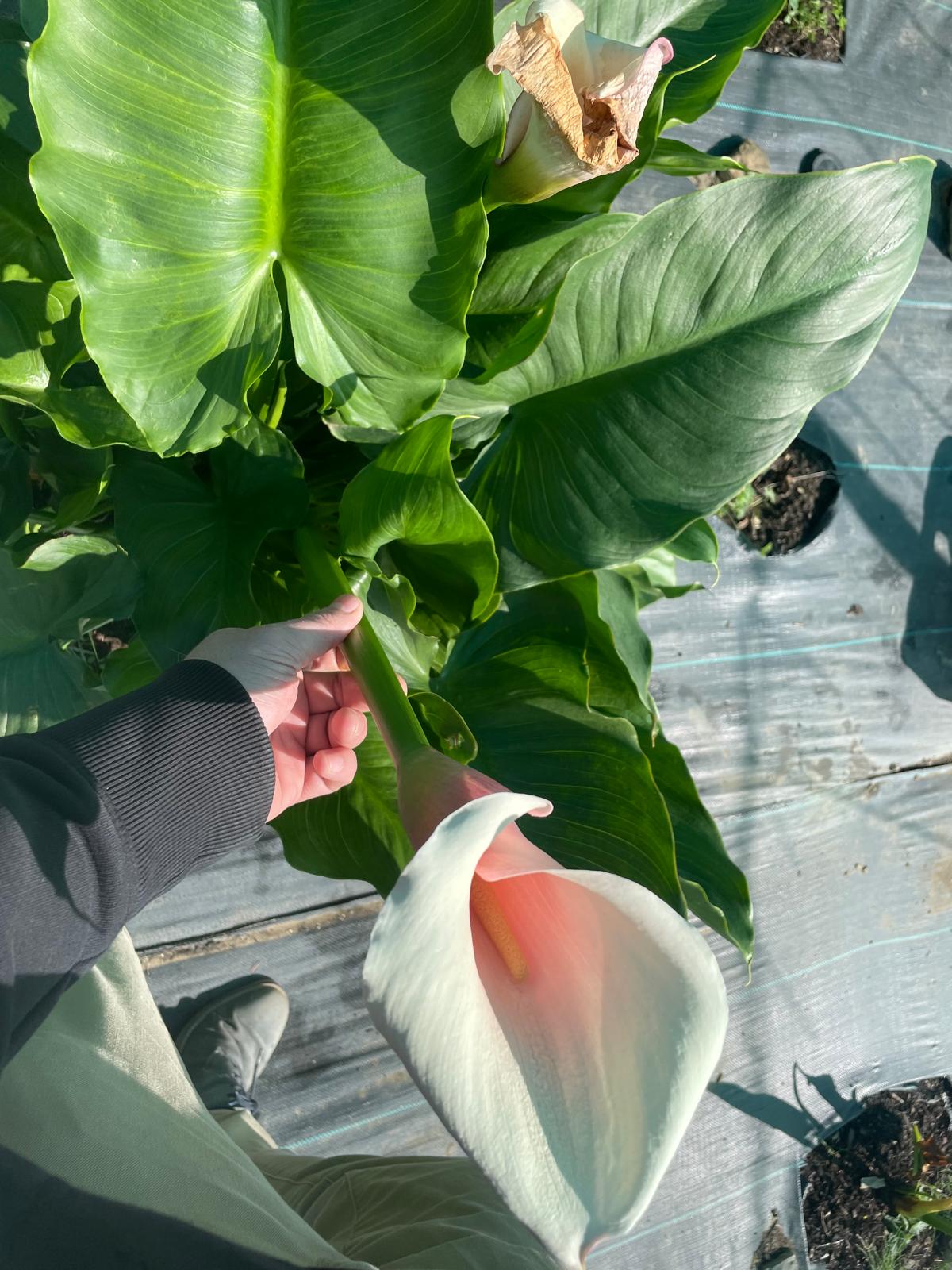Your cart is currently empty!
Unveiling the Enchanting World of Giant Calla Lily Bulbs: A Gardener’s Delight

Introduction
Giant calla lilies, with their captivating trumpet-shaped blooms and elegant foliage, are a perennial favorite in gardens worldwide. Their striking presence and ease of cultivation make them a must-have for any plant enthusiast. This blog delves into the fascinating world of giant calla lily bulbs, providing all the essential information you need to grow and enjoy these horticultural gems.
Choosing the Right Bulbs
Size and Variety
Giant calla lily bulbs vary in size, with diameters ranging from 1.5 to 3 inches. Larger bulbs tend to produce taller, more vigorous plants with multiple blooms. There are numerous varieties of giant calla lilies, each offering unique colors and flower forms. Choose varieties that suit your personal preferences and garden conditions.
Quality Inspection
Before purchasing giant calla lily bulbs, inspect them carefully for any signs of disease or damage. Healthy bulbs should be firm, plump, and free from blemishes or soft spots. Avoid bulbs that appear shriveled, bruised, or moldy.
Planting Giant Calla Lily Bulbs
Timing and Location
Giant calla lily bulbs should be planted in early spring, once the soil has warmed slightly. Choose a sunny location with well-drained soil that is rich in organic matter. Avoid planting them in waterlogged or poorly drained areas.
Spacing and Depth
Space giant calla lily bulbs 12 to 18 inches apart. Plant them about 6 inches deep, with the pointed end facing upwards. Cover the bulbs with soil and firm gently.
Watering
Water the newly planted bulbs thoroughly immediately after planting. Avoid overwatering, as excessive moisture can lead to bulb rot.
Care and Maintenance
Fertilizing
Fertilize giant calla lilies monthly during the growing season with a balanced fertilizer. Follow the package instructions for proper dosage.
Watering
Giant calla lilies prefer moist but not waterlogged soil. Water regularly, especially during hot, dry weather. Allow the top inch of soil to dry out between waterings.
Mulching
Mulch around giant calla lilies with an organic material like compost or bark. Mulching helps retain moisture, suppress weeds, and regulate soil temperature.
Troubleshooting Common Problems
Yellowing Leaves
Yellowing leaves can indicate nutrient deficiency, overwatering, or poor drainage. Address these issues by adjusting the fertilizer regime, watering habits, or soil conditions.
Bulb Rot
Bulb rot is a fungal disease that can destroy calla lily bulbs. Remove any infected bulbs immediately and improve soil drainage to prevent its spread.
Aphids
Aphids are common pests that can infest giant calla lilies. Control them by spraying the plants with an insecticidal soap or neem oil solution.
Harvesting and Storage
Giant calla lily bulbs are dormant during the winter months. Once the leaves have died back, dig up the bulbs and allow them to dry in a warm, well-ventilated area.
Store the dried bulbs in a cool, dry place until it’s time to plant them again in the spring.
Conclusion
Giant calla lily bulbs offer an abundance of beauty and elegance to gardens. By choosing the right bulbs, planting them correctly, and providing proper care and maintenance, you can enjoy the stunning blooms of these captivating plants for years to come. Whether you’re a seasoned gardener or a novice plant enthusiast, incorporating giant calla lilies into your landscape is sure to bring a touch of timeless charm.
Our Shop
-
Crowborough — Zantedeschia aethiopica ‘Crowborough’
-
Green Goddess — Zantedeschia ‘Green Goddess’
-
Hercules — Zantedeschia aethiopica ‘Hercules’
-
Highveld — Zantedeschia ‘Highveld’
-
Odorata — Zantedeschia odorata
-
Pink Flamingo — Zantedeschia ‘Pink Flamingo’
-
Pink Mist — Zantedeschia ‘Pink Mist’
-
White Giant — Zantedeschia aethiopica ‘White Giant’










Leave a Reply